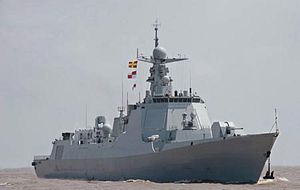The last two lines of Thomas Hardy’s poem “And There Was a Great Calm,” written on the occasion of the signing of the armistice in November 1918, contains the following exchange, laconically summarizing what I believe is the eternal tension that permeates foreign policy decision-making: “The Sinister Spirit sneered: ‘It had to be!’ / And again the Spirit of Pity whispered, ‘Why?'” (Side note: the writer Graham Greene prefaced his autobiography Ways of Escape with these lines and retrospectively elevating it to a guiding principle of his life.)
In short, those lines speak to the tension between those who have a natural disposition toward seeing the U.S. national interests at stake everywhere in the world (especially in crisis zones), and those who cautiously question some of the basic premises of this assumption. I would posit that especially the Socratic “Why?” part of the stanza ought to be one of the guiding principles of those who provide advice to senior-policy makers, who often by default have to assume a “It has/had to be” stance.
As I already stated in my last analysis (“The End of the Submarine as we Know it?”), I have always been rather skeptical of the anti-access/anti-denial (A2/AD) hype propagated by certain U.S. naval analysts. It smacks too much of the “when life gives you lemons, make lemonade” attitude, i.e. it says much more about how the U.S. navy and its analysts envision what Chinese naval strategy ought to be, inferred from their own assumptions (made while subconsciously looking for ways to justify the raison d’être of the world’s most powerful navy), rather than the reality of Chinese naval doctrine.
Now, two American professors have published a fascinating essay entitled “Projecting Strategy: The Myth of Chinese Counter-Intervention” investigating the validity of the centrality of counter-intervention strategies in Chinese military thought. The authors, M. Taylor Fravel and Christopher P. Twomey, thus assume the stance of the Socratic “Why?” evidenced by Hardy’s “Spirit of Pity.” They state that “Chinese military writings usually use ‘counter-intervention’ only to describe the United States A2/AD concept in Chinese terms. In this way the use of ‘counter-intervention’ sustains a form of mirror-imaging by casting China’s modernization in terms familiar to U.S. defense planners.”
Fravel and Twomey further point out that the Chinese terms used to denote counter-intervention (A2/AD), “do not appear in any of the white papers on national defense, which are authored by AMS [Academy of Military Science] for the Ministry of National Defense (…)The 2011 edition of the PLA’s official glossary of military terms does not contain an entry for any of these terms.” Nor are the terms featured in other prominent Chinese publications. The authors conclude that none of the military campaigns outlined in the PLA’s professional military literature are “best conceptualized as serving a broad ‘counter-intervention’ strategy.”
Could it be that the Chinese PLAN is trying to deceive the United States regarding its real intentions? This is not very likely, according to the authors, for “a military operation needs the broader parameters of its primary operational doctrine to be relatively public so as to align a wide range of choices and policies it must take. Trainings must be conducted to serve that goal. Procurement and even organizational changes should also mesh up with the strategic goal.” They do point out that China has a host of new weapons perfectly suited for denying an enemy the use of the “near seas” (jinhai), such as the famed DF-21D anti-ship missile, but they question in what ways these weapons will be used in a future conflict.
What are the risks of overzealous analysts painting doomsday “carrier-killer” scenarios? For one, analysts may miss other aspects of the PLAN’s modernization and its development of blue-water-capable naval forces. Fravel and Twomey emphasize that “casting counter-intervention as China’s strategy reduces the objective of China’s military modernization to one primary mission, thereby overlooking that much broader range of goals that actually motivate China’s defense policy.” The myth of counter-intervention also “increases the perceived threat that China’s military rise poses to the United States.” The authors point out that the the “Air Sea Battle” concept is built around the alleged primacy of A2/AD strategies in Chinese military doctrine.
The end result of this overemphasis upon Chinese counter-intervention strategies may have deep repercussions on the macro-level, as the authors argue: “Thus, mischaracterizing Chinese strategy has deeply negative effects. It can lead to a deepening of tensions between the two largest power on the globe by exacerbating security dilemmas and characterizing the Chinese strategy as aimed at the United States more than it actually is.” The authors conclude with a call for more objective analysis. “To avoid unnecessary conflicts between the two great powers,” they write, “it is vital to ensure that the analytic community grounds its conclusions in empirical evidence.”
In other words, that scholars continue to ask that all important “Why?” when told that something “had to be.”

































